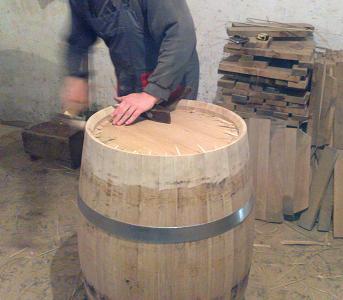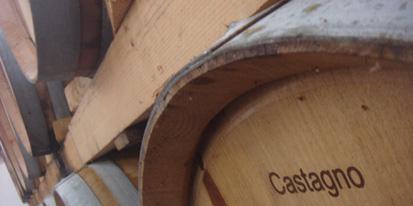
1 minute read
A Patient Wait Making Balsamic
Cultivated and aged in wooden barrels the cooked must from locally grown and lateharvested grapes, usually Lambrusco or Trebbiano varieties, takes on the complex flavors of the casks. Every year the fermenting grape must is transferred from barrel to barrel, a profound ritual in which the product inside the big barrels is gradually condensed as it passes into medium and then small
The changing seasons and temperatures are the patient predictors that a quality balsamic needs to reach its unique aroma and taste.
Advertisement
Traditionally the wood used for making the barrel set or batteria for aging balsamico are those typical of the valley and hills around Modena and Reggio and chosen for their ability to facilitate evaporation and acidification. Oak, mulberry, chestnut, juniper and cherry, are chosen according to precise features


• tannin-rich chestnut helps to enhance its characteristic dark color
• cherry wood sweetens its flavor
• mulberry makes it more concentrated with a spicy aroma and bold taste
• the strong resins of juniper wood enhance its aroma
• and oak, generally used for the smaller
Barrel Aging
As the vinegar ages some of it, known as “The Angel’s Share” evaporates, prompting the transmission into the next cask. The first barrel in the series is the largest and contains the youngest vinegar; the last is the smallest and contains the oldest vinegar. The older the set of barrels, the more concentrated and sophisticated the vinegar. One hundred liters (about 26 US gallons) of grape juice are needed to produce 6 liters (1.6 gallons) of Tradizionale Aceto Balsamico.

As the product is decanted and transferred through the battery of decreasing sized casks, usually three to five, the long aging process (at least 12 and up to 25 years or more) produces a thick, rich, velvety, deep, glossy, mahogany colored syrup “almost too divine to be called vinegar” (Italian Trade Commission).








